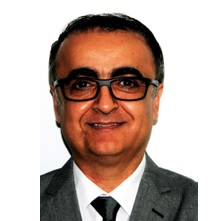Autism Spectrum Disorders (ASD) in Low- and Middle-Income Countries (LMICs) and among Immigrants and Minority Groups in High-Income Countries (HICs)
A special issue of Brain Sciences (ISSN 2076-3425). This special issue belongs to the section "Developmental Neuroscience".
Deadline for manuscript submissions: closed (25 April 2023) | Viewed by 20405
Special Issue Editor
Interests: autism spectrum disorders; autism; parental based early intervention; parenting interventions; developmental disabilities; caregiving impacts; intellectual and developmental disabilities
Special Issues, Collections and Topics in MDPI journals
Special Issue Information
Dear Colleagues,
Globally there is a rising rate of autism spectrum disorder (ASD). However, the increasing global wealth of knowledge on ASD is primarily based on different studies conducted in developed, affluent countries. This situation is partly a result of a lack of epidemiological and service research in the field of mental health in general and ASD in particular in LMICs. The irony is that the demographics of the global human population are tilted so that most (up to 80%) of world children and youth live in LMICs.
A similar shortage of studies reported ASD studies among immigrants and minority groups in high-income countries (HICs). Hence, there is evidence of ethnic and racial differences in ASD prevalence and services access even among the HICs and developed societies. It is also reported that minority and immigrant children who are most displaced from LMICs are less likely to be diagnosed with ASD or overdiagnosed because of the application of the unsuitable cultural scales and standards. Delayed diagnosis is another crucial issue for immigrant children from LMICs to HICs. Within HICs, individuals from high socioeconomic backgrounds are mainly represented in ASD research.
Recently there has been an increase in attention regarding similarities and differences in the manifestations and the impact of the condition in different world regions, among different cultures and minority groups. Hence, evidence remains limited in LMICs and among immigrants and minority groups. The public and policy-makers in LMICs and HICs were not generally persuaded to pay attention to different aspects of ASD research or particular groups of individuals. There are various reasons for this neglect; still, the high cost of researching ASD contributed to this imbalance in LMICs.
More endeavor is needed from different stakeholders in ASD to address the global imbalance in knowledge on ASD in LMICs and among immigrants and minority groups in HICs.
This special issue aims to review the current knowledge about ASD differences, including the complex and multilayered impacts in LMICs and among immigrants and minority groups in high-income countries. It is also aimed to highlight areas in which further research is needed.
Prof. Dr. Sayyed Ali Samadi
Guest Editor
Manuscript Submission Information
Manuscripts should be submitted online at www.mdpi.com by registering and logging in to this website. Once you are registered, click here to go to the submission form. Manuscripts can be submitted until the deadline. All submissions that pass pre-check are peer-reviewed. Accepted papers will be published continuously in the journal (as soon as accepted) and will be listed together on the special issue website. Research articles, review articles as well as short communications are invited. For planned papers, a title and short abstract (about 100 words) can be sent to the Editorial Office for announcement on this website.
Submitted manuscripts should not have been published previously, nor be under consideration for publication elsewhere (except conference proceedings papers). All manuscripts are thoroughly refereed through a single-blind peer-review process. A guide for authors and other relevant information for submission of manuscripts is available on the Instructions for Authors page. Brain Sciences is an international peer-reviewed open access monthly journal published by MDPI.
Please visit the Instructions for Authors page before submitting a manuscript. The Article Processing Charge (APC) for publication in this open access journal is 2200 CHF (Swiss Francs). Submitted papers should be well formatted and use good English. Authors may use MDPI's English editing service prior to publication or during author revisions.
Keywords
- Autism Spectrum Disorders (ASD)
- Lowe and Middle-Income Countries (LMIC)
- High-Income Countries (HIC)
- autism research
- immigrants
- minorities






